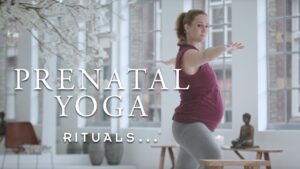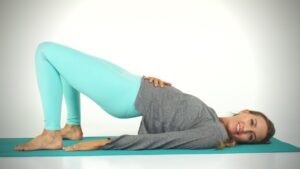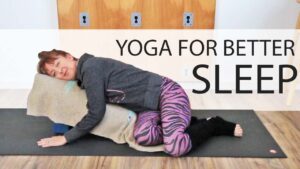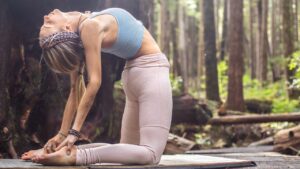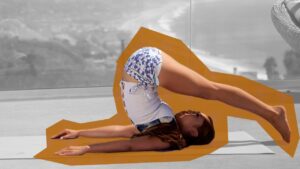Looking for a way to unwind after a long day? Look no further than gipsyyogi.com! Our website is all about promoting holistic wellness and mindfulness, including practices like yoga, meditation, and outdoor adventure. While we may not sell mattresses directly or offer sleep advice, we believe that our focus on healthy living can indirectly support better sleep by reducing stress levels and encouraging physical activity.
That’s why we’re excited to share an article with you today comparing bed bugs and lice. While these pests may not be the most pleasant thing to think about as you drift off to sleep, knowing how to spot them early on can help prevent infestations in your home. Plus, it’s always helpful to learn more about the little critters that can disrupt our peaceful slumber!
At gipsyyogi.com, we understand that getting good quality sleep is essential for overall wellbeing. That’s why we try to provide content that inspires relaxation and self-care. For example, check out our articles on hiking trails or healthy recipes that could help you unwind before bedtime.
We want our readers to feel empowered when it comes to improving their own sleep quality. Whether you’re a fan of camping trips or prefer practicing restorative yoga at home, there are plenty of ways to create a soothing environment for yourself each night. So take some time for yourself today and explore all that gipsyyogi.com has to offer!
Whether you’re trying to get to sleep earlier or you want to ease stress before bed, a before-bed yoga routine will be beneficial to you. You can try a simple twisting pose, such as an easy forward bend, to relax your body. Try to focus on breathing as you stretch each muscle group. A bolster can make the asana more comfortable. Ideally, you’ll do the asana for five minutes.
It may seem counterintuitive, but doing a little yoga before bed is actually proven to reduce anxiety, including nighttime fears. Most people with insomnia have something on their minds. Work-related concerns, relationship problems, and even planning for the next day are all common culprits. By practicing a simple yoga routine, you can stop the mind-chatter and achieve a restful sleep. Additionally, slow breathing helps to maintain memory and organize your thoughts.
An ideal bedtime yoga routine is calming and restorative. Try to avoid vigorous yoga routines, such as vinyasa, because the latter can increase your chances of falling asleep. Instead, try to perform slower yoga routines with more inward-focused postures. Then, add some breathing exercises to help your body relax and sleep better. If you find that the yoga routine is too tiring or too stressful, try to start a more gradual program.
If you have the time and energy to spend doing yoga before bed, you can incorporate it into your evening routine. There are several types of yoga poses, each with a specific purpose. Some are energizing, while others relax the mind and body. Some of the best ones for before bed are forward-bending poses, side-bends, and twists. Sitting poses tend to be less active and more relaxing than standing asanas.
The final pose of your before-bed yoga routine is savasana, a classic yoga pose. For this exercise, you should have your eyes closed and prop a favorite pillow under your head. Depending on how comfortable you feel, you may even fall asleep in this position. Roll over when you’re ready and repeat the process. While you’re doing this, you’ll be sure to be more rested the next morning.
Then, you can try pillow yoga. This pose stretches the back and hips. It is soothing to the nervous system and feels like a big hug. To complete this pose, you’ll need a bolster or pillow on your bed, and a blanket or a pillow to prop your head. Once you’ve completed the sequence, sit in this pose for eight breaths. Hold it for a few minutes.
A good before bed yoga routine will also help you relax. The benefits of mindfulness are impressive. Not only does it increase your ability to control emotions, but it also lowers your stress level. Stress and heightened emotions can disrupt your sleep and make your days less enjoyable. As you can see, a daily yoga routine will improve your mindfulness, a key to a peaceful night’s sleep. The benefits of practicing yoga are many, and you’ll be surprised at how much better you sleep at the end of the day.
Bed yoga poses
If you have a low back, skip the triangle pose. Instead, place a folded blanket or bolster under your knees. Sit up tall, with your feet closer to your hips than your knees. Relax your spine by lifting your chest. Slowly lower your knees and hips to prepare your body for sleep. Hold for five to fifteen minutes and repeat with your legs. If you have low back pain, skip this pose and proceed to the next one.
Another challenging pose to do in bed is the frog pose. This involves sitting with your right knee on the floor and your left arm hanging overhead. Inhale deeply and extend your fingers toward the ceiling. Inhale deeply to stretch your left side, and then exhale deeply. Extend the left side of your body by reaching your hips towards the left side of the bed and expanding your ribs. Hold this stretch for thirty to sixty seconds.
For the full release of the lower back, relax your buttocks. Your buttocks naturally flex when you lift your torso. You should allow your hips to sink into the bed, and spread your legs apart to avoid using your buttocks to maintain balance. During this stretch, you should not lift your head. You should remain comfortably in the pose while lying on the bed. You can also practice this posture in the comfort of your own bed.
Another bed yoga pose is the side lunge. To perform the side lunge, start with the RIGHT foot forward and both hands on the mat. Slide over to your LEFT hand. Your RIGHT calf should be parallel to the front of the mat. Next, lower your right knee to the floor. Keep your back flat. Then, return to the runner’s lunge and square your hips to the front of the mat.
Aside from the back, this pose is also great for the shoulders. It helps you relax while also stimulating digestion and opening your shoulders. As you relax, try this one and see how your back improves. It is also beneficial to those suffering from lower back pain or other ailments. It can help you reduce stress levels and deepen your meditation. So, try it out today! You may be surprised how much better you feel after a bed yoga session.
For a more challenging bed yoga pose, try the reclining figure four. This pose can be done any time of the day or night. It has several variations and can be modified according to your fitness level. A variation of the Bound Angle Pose, also known as the Butterfly Pose, the reclining figure four ends with a restorative spinal twist. It is also great for helping with shin splints.
The butterfly pose, whose name comes from the way the legs bend and open, opens the hips and stretches the inner thighs. Other forward bends are also good for the back and are designed to calm the nervous system and soothe stressed minds. A forward fold over an extended leg, held on the calf or foot, improves digestion and blood circulation. These bedtime yoga poses will help you relax and get a better night’s sleep.
Morning yoga in bed
For the best yoga in bed experience, do some poses while you’re lying in bed. “Reclined Twist”: Begin the stretch with your knees bent and your hands on your hips. Hold this position as long as you’re comfortable, then repeat on the other side. Ideally, you should do it on the same side as your partner. For added support, you can also do the pose with a wall.
Child’s Pose: This pose is a great way to begin your day. It allows you to focus on your breath, which contains life-force energy. The breathing also stretches your shoulders and prepares your digestive system for the day. After practicing this pose, you can wake up feeling refreshed and energized. Do three repetitions of this posture. Your body will be in a better position to face the day. This yoga pose is also a good way to warm up for the day.
Squats: The first pose of the day involves bending the knees and hips. You will need to reach back towards the floor with your right arm, extending the left arm back towards your thighs. As you bend further, make sure to relax the neck. While doing squats, you should lightly grip your blanket to improve your wrist alignment and traction. Then, slowly lower your knees toward the bed.
Before you begin practicing morning yoga, make sure to memorize the poses you practice and repeat in a sequence. Print out a list of poses to practice before you go to bed, or load up an app on your phone or iPad. Try to remember that the purpose of morning yoga is to set an intention for your day and create a sense of calm, clarity, and strength. If you can wake up at a convenient time, you’ll feel much more energized and alert the next day.
The next yoga pose is the “Supplemental Twist” (abha). This one helps you stretch your back and improves your circulation. Then, you can try “Warrior Pose,” which is another pose that helps you wake up. Try both the seated and standing versions to see which one suits your style. Once you’ve tried both versions of the posture, you’ll want to do a few more before you go to sleep.
Sitting on the edge of the bed or cross-legged is an easy way to do yoga in bed. The bottom of your feet should be planted on the floor, and your toes should be pointing forward. Your spine should be straight and your hands should be resting on your knees or legs. When you sit up, you should feel your chest shining forward, letting your head fall back slightly. You can repeat this pose as many times as you wish until you feel comfortable in it.
Another simple seated yoga pose is called the “Cowboy Stretch”. Sit on the floor and place your RIGHT hand on the floor. Your LEFT hand should be over your left thigh. As you exhale, stretch your left leg over your right ankle. Then, cross the left hip over the right ankle, while keeping the right one flat on the ground. Hold this pose for 30-60 seconds, and repeat on the other side.
Yoga mattress
Before you purchase a yoga mattress, you need to know a few facts about it. It should be made from durable material. The thicker the better, so make sure to choose a mattress with a good quality foam. For example, Jade Yoga produces a thick, durable yoga mat, and their brand is known for their environmentally friendly practices. They even plant a tree for every yoga mat sold. If you’re buying a yoga mattress for travel, look for one with a microfiber surface that absorbs moisture better than a towel.
Some yoga mats are made of natural materials, such as cork and rubber. While these are great options for those looking to practice yoga outdoors, be aware of possible dangers. Rubber can cause allergic reactions, so if you have sensitive skin, you should avoid using this material. If you are concerned about latex, there are many alternatives. Cork and jute mats are also eco-friendly and come with two eyelets to store them in a closet.
The thickness of the mat can vary greatly, ranging from pancake thin to extra-thick. The thinnest mats allow more ground contact, which some yogis prefer, while the thickest mats are plusher and may feel better for those with sensitive joints or backs. A thin mat is not necessarily the best option, and a thicker mat may be necessary for those who commute a lot. When choosing a mat, consider whether you’ll use it only at home or will use it while exercising.
A standard yoga mat is 24 inches by twenty-four inches. You can buy a longer mat for taller people. A cheap yoga mat can be as simple as $25 or as expensive as $140. The price of the yoga mat can also depend on the quality. The cheaper the mat, the cheaper it will be, but most people will find that the one they purchase will provide adequate support. But be sure to check the manufacturer’s warranty. And make sure that it does not contain harmful chemicals.
The texture of a yoga mat is important, especially if you’re prone to slipping and causing pain when you’re doing savasana. Some yoga mats are bumpy and rough, while others have a smooth texture. In addition to its thickness, the mat’s surface also affects the way you move and sit. The smoother the texture, the better. You may want to consider the type of fabric and the color, as the latter two factors affect comfort and traction.
Another important factor to consider when buying a yoga mat is portability. When it comes to portability, choose a mat that rolls up or fits into a yoga strap. You may be surprised by how many mats can fit into a yoga bag or carrier. If you’re looking for a mat that’s easy to use on the road, a Gaiam Medallion yoga mat will be a good option. The Gaiam Medallion mat is a lightweight, cushiony option that features an elegant design.



